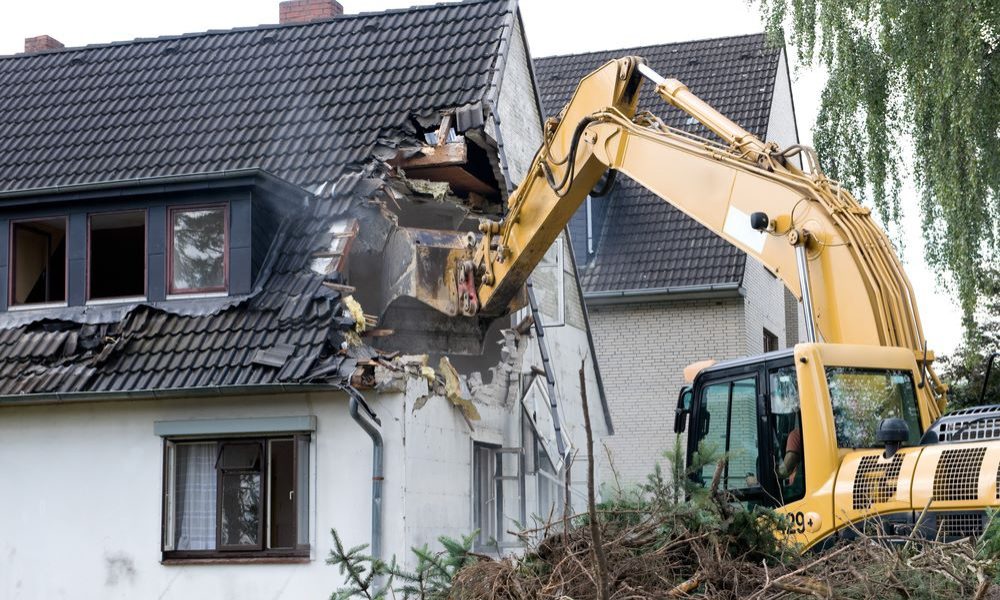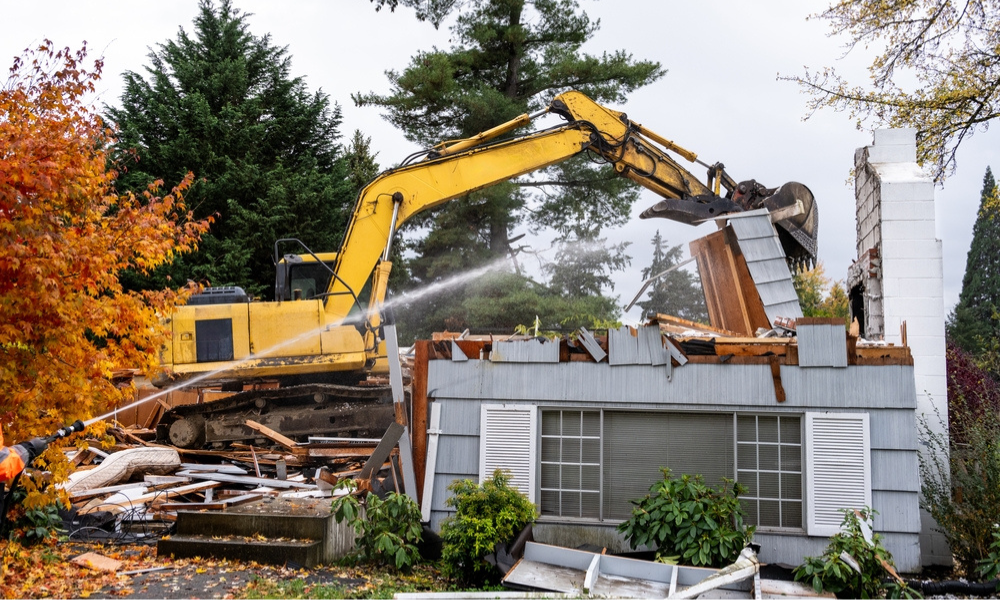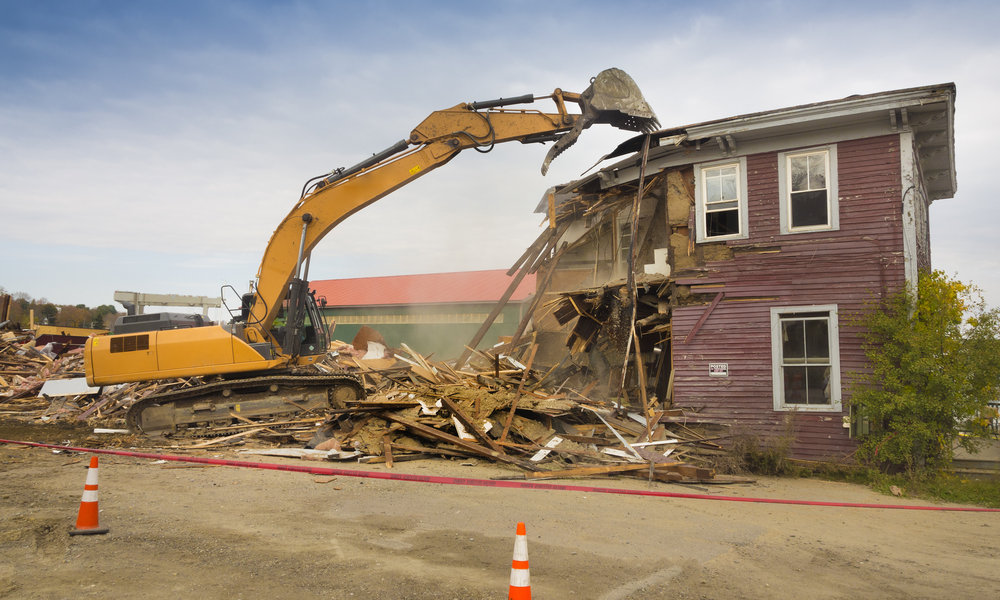Estimated reading time: 5 minutes
Demolishing part of your home may seem like a major task, but with proper planning, the right approach, and a clear understanding of safety measures, it can be handled efficiently. Whether you’re removing an old shed, breaking down an interior wall, or clearing space for renovations, having a step-by-step plan makes all the difference.
As someone who has spent years in this industry, I know firsthand that preparation and execution are key to a smooth teardown. In this guide, I’ll walk you through everything you need to know—from planning and permits to debris removal and cost considerations.
What’s Covered in This Guide?
Different types of home demolition
How to prepare before starting work
Essential tools and equipment
Safety measures to prevent risks
Handling debris and responsible disposal
Cost considerations and budgeting
When to do it yourself and when to hire professionals
Understanding Home Demolition

Not all demolition work is the same. Before making any structural changes, it’s important to understand the different approaches:
Types of Home Demolition
Full Removal – The complete teardown of a structure, often in preparation for a rebuild.
Selective Demolition – Taking out certain areas, such as a single wall, kitchen, or extension.
Deconstruction – A method focused on salvaging materials for reuse.
Interior Strip-Out – Removing fixtures, cabinetry, or flooring without affecting the building’s structure.
Each method has specific challenges and requires different levels of expertise. If you’re unsure which one fits your needs, consulting an expert is a smart move. Need help selecting a reliable contractor? This guide will walk you through the process.
Preparing for the Job
Jumping into demolition without a plan is a mistake I’ve seen many homeowners make. Here’s how to lay the groundwork properly:
Check Local Rules – A permit is often required, and different areas have varying regulations on structural removal.
Assess for Hazardous Materials – Older homes might contain asbestos, lead paint, or mold that require special handling.
Turn Off Utilities – Gas, electricity, and water must be safely disconnected before starting.
Protect Nearby Areas – If working inside, cover floors and furniture. If outside, ensure neighboring structures aren’t at risk.
Skipping these steps can lead to unnecessary risks, fines, or costly repairs. Planning ahead is always the best approach.
Staying Safe Throughout the Process

Demolition work has its hazards, but taking proper precautions reduces risks significantly.
Wear Protective Gear – Hard hats, safety glasses, gloves, and sturdy boots are a must.
Minimize Dust and Debris – Use plastic sheets to seal off rooms and mist areas with water to keep dust from spreading.
Check Structural Integrity – Removing load-bearing walls without support can lead to serious damage.
Have an Emergency Plan – Know where first aid supplies are and how to handle unexpected situations.
If you’re observing rather than performing the work, understanding these safety tips can help keep you protected.
Tools & Equipment You’ll Need
The right tools can make or break your experience. While some projects require heavy machinery, smaller tasks only need a few essentials:
Sledgehammer – Great for breaking down walls and large materials.
Crowbar & Pry Bar – Useful for pulling apart wood, flooring, and fixtures.
Saw (Reciprocating or Circular) – Cuts through wood, metal, and drywall with ease.
Debris Bags or Dumpster Rental – Keeps waste organized and manageable.
Using proper tools prevents unnecessary damage and makes the process far more efficient. Curious about what professionals rely on? This list covers the essentials.
Handling Waste & Debris
Tearing things down is easy, but dealing with the aftermath requires responsibility. Instead of hauling everything to a landfill, consider these options:
Salvage What You Can – Wood, fixtures, and metal can often be repurposed.
Sort Materials for Recycling – Many materials, including concrete, have recycling options.
Dumpster or Waste Removal Services – If there’s a large volume of debris, renting a roll-off container simplifies cleanup.
Thinking about sustainability? There are ways to reduce waste while still getting the job done. Learn more about eco-friendly demolition methods.
Estimating Costs & Budgeting Wisely
How much should you expect to spend? The answer depends on factors like size, location, and complexity. Here’s a general idea:
| Type of Work | Estimated Cost |
| Interior Wall Removal | $500 – $2,000 |
| Small Shed Removal | $500 – $1,500 |
| Garage Demolition | $1,500 – $5,000 |
| Full House Removal | $5,000 – $30,000 |
Additional expenses include permits, disposal fees, and hazard removal, so it’s always best to budget accordingly. If you’re planning ahead, this cost breakdown will give you a clearer picture.
DIY vs. Hiring a Pro: What’s the Right Choice?
Some projects are simple enough to handle yourself, while others demand expert oversight. Here’s a quick comparison:
DIY Works If:
You’re handling a small task (removing cabinets, drywall, tile).
There are no hazardous materials involved.
You have the right tools and protective gear.
Hire a Professional If:
Structural elements (like a load-bearing wall) are involved.
The work requires heavy machinery or specialized skills.
There are safety concerns, such as electrical or gas lines.
Not sure which option fits your project? This guide breaks down the pros and cons.
Final Thoughts
Home demolition is more than just swinging a hammer—it’s about preparation, safety, and making informed choices. Whether you’re tackling a small remodel or preparing for a full teardown, proper planning ensures a smoother experience.
If you’re new to this, start small, follow safety guidelines, and don’t hesitate to call in professionals when needed. A well-executed project not only saves money but also prevents unnecessary damage and risk.Thinking about taking on a demolition task? Do your research, follow the right steps, and make sure your approach is safe and efficient.



